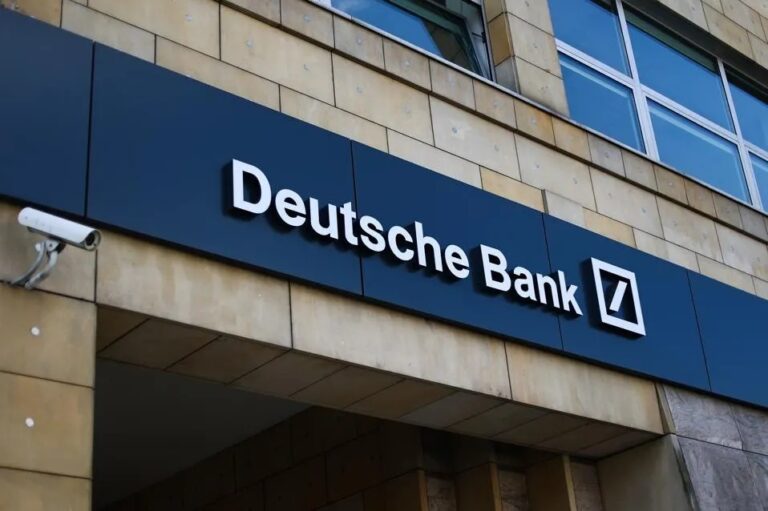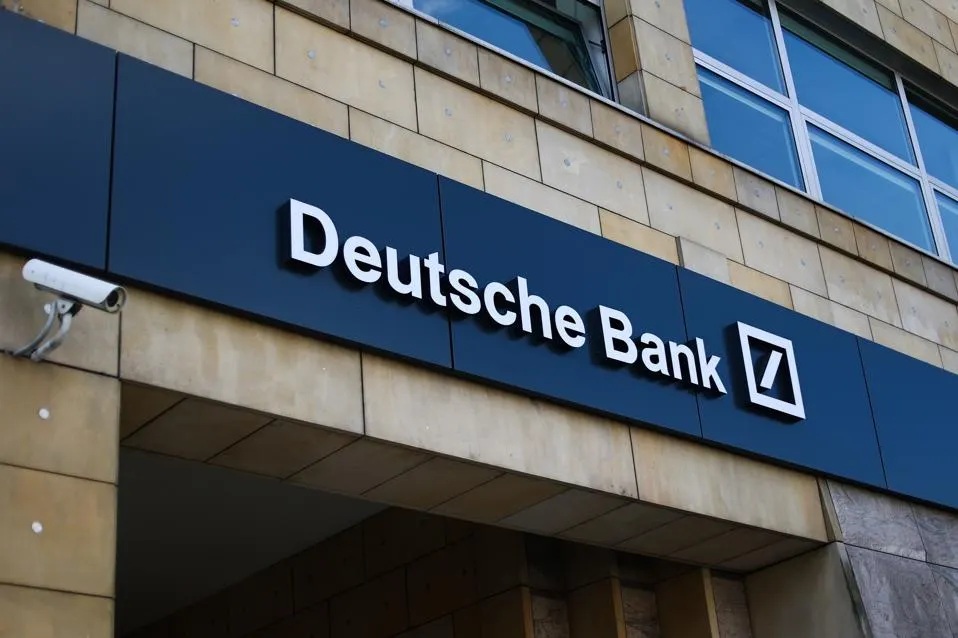
Deutsche Bank has forecasted that central banks are likely to include both Bitcoin and gold in their reserve portfolios by 2030, positioning them as complementary hedges against inflation, geopolitical risks, and the ongoing erosion of U.S. dollar dominance.
This outlook emerged in a series of research notes from the bank’s analysts, starting around September 2025, and gained traction in early October amid surging prices for both assets—Bitcoin surpassing $125,000 and gold nearing $4,000 per ounce.
Analysts Marion Laboure and Camilla Siazon argue that Bitcoin could evolve into a “modern cornerstone of financial security,” mirroring gold’s historical role in the 20th century. They emphasize that neither asset is expected to replace the dollar entirely, but both will likely “coexist on central bank balance sheets by 2030” due to their scarcity, low correlation with traditional assets, and strategic value.
The U.S. dollar’s portion of global reserves has fallen from 60% in 2000 to about 43% in 2025, prompting diversification. Central banks like those in China, Poland, and Turkey are already ramping up gold purchases, while Bitcoin’s institutional adoption signals growing legitimacy.
Register for Tekedia Mini-MBA edition 18 (Sep 15 – Dec 6, 2025): registration continues.
Tekedia AI in Business Masterclass opens registrations.
Join Tekedia Capital Syndicate and co-invest in great global startups.
Register for Tekedia AI Lab: From Technical Design to Deployment.
Despite being “backed by nothing,” Bitcoin’s volatility has hit historic lows even as prices rally, making it behave more like gold. Deutsche Bank highlights its potential as a store of value, especially for nations seeking to reduce U.S. financial exposure via decentralized networks.
Central banks currently hold about 35,200 tonnes of gold out of ~216,000 tonnes total supply. A 2025 World Gold Council survey shows 43% of central banks planning to increase holdings, with 95% expecting overall global reserves to rise.
This prediction aligns with broader trends: de-dollarization efforts, record ETF inflows hundreds of billions into Bitcoin ETFs since 2024, and recent U.S. policy moves like the strategic Bitcoin reserve under the Trump administration. The report, titled Gold’s Reign, Bitcoin’s Rise, has sparked widespread discussion.
scottmelker noted the weakening dollar as a key driver. Skeptics point to regulatory hurdles and Bitcoin’s past volatility, but the consensus is that this could accelerate sovereign adoption.
Deutsche Bank’s view isn’t about central banks “running to” these assets in panic but strategically allocating to them for resilience. If realized, it could solidify Bitcoin’s transition from speculative asset to global reserve contender alongside gold.
Implications of Central Banks Adopting Bitcoin and Gold by 2030
Central banks diversifying into Bitcoin and gold could accelerate the decline of the U.S. dollar’s dominance currently ~43% of global reserves, down from 60% in 2000. This shifts the global financial system toward a multipolar reserve structure, reducing reliance on fiat currencies like the dollar and euro.
Sovereign adoption would cement Bitcoin’s status as a legitimate asset class, likely boosting institutional and retail investment. This could drive Bitcoin prices higher, with some speculating $250,000+ by 2030, though volatility risks remain.
Increased central bank demand for gold already at 35,200 tonnes globally could sustain or elevate prices, potentially pushing gold beyond $4,000/oz, especially if inflation or geopolitical tensions persist.
Bitcoin’s maturing profile lower volatility despite price surges and gold’s stability could make them attractive for risk-averse central banks, potentially stabilizing portfolios but introducing new risks if Bitcoin’s price corrects sharply.
Nations like China, Russia, and BRICS countries, wary of U.S. sanctions and dollar weaponization, may accelerate Bitcoin and gold adoption to bypass SWIFT and reduce exposure to U.S. financial systems. This could weaken U.S. geopolitical leverage.
Bitcoin’s decentralized nature makes it appealing for countries seeking financial autonomy, while gold’s physicality offers tangible security. Central banks may balance both to hedge against different risks like cyber vs. physical threats.
Countries with significant Bitcoin or gold reserves could gain influence in a fragmented financial order, especially if digital assets become integral to cross-border trade or reserve settlements
Central bank Bitcoin holdings could spur investment in blockchain infrastructure, including custody solutions and regulatory frameworks. This might accelerate development of central bank digital currencies (CBDCs) or hybrid systems integrating crypto.
To accommodate Bitcoin, regulators worldwide would need to standardize rules on custody, taxation, and anti-money laundering, potentially reducing crypto’s “wild west” stigma but increasing compliance costs.
Both assets could serve as hedges against persistent inflation global CPI still elevated in 2025 and fiat debasement, protecting central bank purchasing power but potentially exacerbating wealth inequality if prices soar.
Sovereign backing could boost public confidence in Bitcoin, driving retail adoption but also raising concerns about speculative bubbles or exclusion of non-crypto holders.
Holding non-yielding assets like Bitcoin and gold could limit central banks’ ability to finance deficits or manipulate money supply, potentially altering traditional monetary policy frameworks.
Bitcoin’s low correlation with traditional assets could shift if central banks integrate it into reserves, potentially aligning its price movements more closely with macroeconomic trends. Bitcoin mining’s energy intensity could draw scrutiny, pushing central banks to favor “green” crypto solutions or face public backlash.
Central banks lack infrastructure for large-scale Bitcoin custody, and gold’s physical storage requires significant logistics, potentially slowing adoption.
If Deutsche Bank’s forecast materializes, central banks’ embrace of Bitcoin and gold could reshape global finance, legitimizing crypto, weakening dollar hegemony, and fostering a multipolar reserve system.
However, it introduces risks like market volatility, regulatory complexity, and geopolitical friction. Investors and policymakers should monitor adoption trends, regulatory developments, and price movements in both assets.


